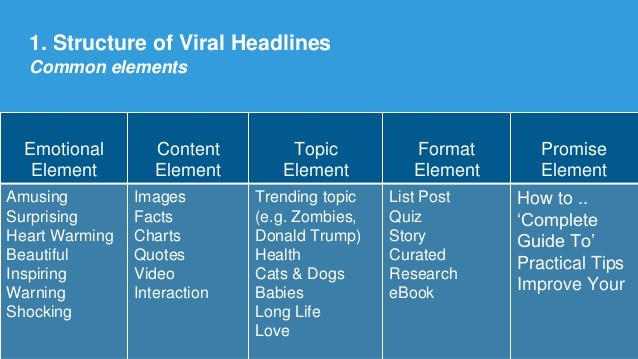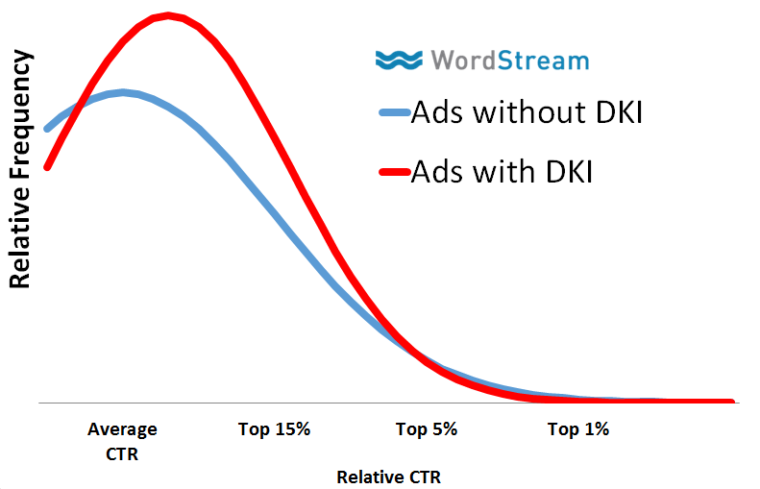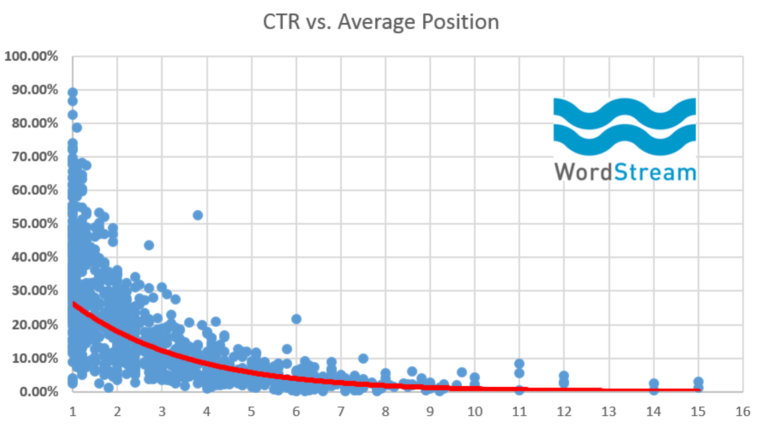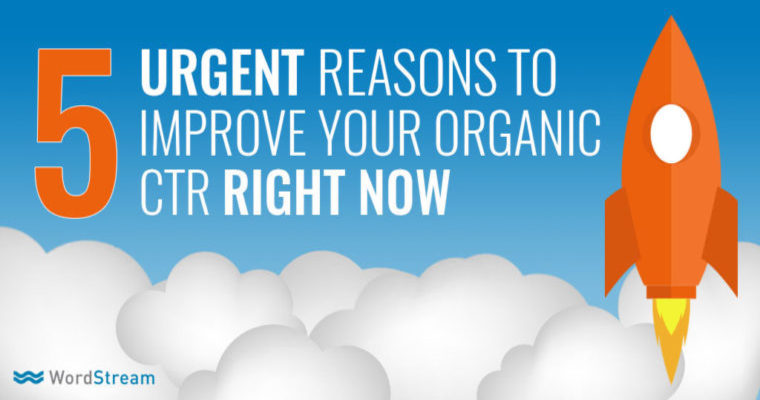Links are essential to SEO success. Content is king.
We’ve been hearing these two mantras repeated by Google spokespeople in blog posts and videos, by experienced SEOs in countless articles here on Search Engine Journal and on other industry sites, and by some of the smartest speakers during keynotes and sessions at the best industry conferences, like SMX.
Everyone knows this. Links and content are barriers to entry in today’s digital world.
But even having an excellent link profile and some of the greatest content on the web won’t guarantee you SEO triumph and top SERP positions. After all, your true competitors also know they have to build an amazing link profile and create the greatest content they can dream up.
Is there a way to differentiate your business? Where should you focus your SEO efforts?
Your organic click-through rate (CTR).
Here are five reasons why it’s urgent that you start improving your organic CTR right now.
1. CTR Impacts Ranking
Let’s go back briefly to the “How Google Works: A Ranking Engineer’s Perspective” by Paul Haahr at SMX West. He noted that Google is constantly conducting A/B experiments on search results, looking for changes in click patterns.
After all, Google wants to provide the best answer to users. Clicks are an important measurement by which Google evaluates its success.
So, let’s say for a certain keyword, your competitor’s page ranks #1 and your page ranks #2. Both of your pages answer the query and neither page has an advantage in links.
What’s the easiest way to start outranking your competitor? Is it to build more links to that content? Is it to make your content 100 words longer? No.
What you need to do is get more people to click on your result. If you start getting more clicks than your competitor, Google will take notice and start thinking that maybe your page is actually the best result for searchers, because more people are clicking on it and engaging with it.
I believe the future of SEO is about achieving SERP supremacy though higher-than-expected organic CTRs.
2. EAT up the Competition With Engagement Metrics
Google assesses page quality by looking at three key elements: expertise, authoritativeness, and trustworthiness. So Google is looking at the context of your entire website, not just individual pages.
This is why CTR is a key engagement metric. This data can help demonstrate to Google that your page and site is an expert, trusted authority that users will click on.
Google has gathered tons of engagement data about your site (and your competitors), taking into account a variety of factors (e.g., SERP position, device type, location, and time of day). Higher engagement metrics correlate with higher interest/relevance, so you need to strive to have higher than expected engagement metrics.
But CTR is just one engagement metric.
Google is also looking at how users behave after they land on your site to determine whether they were successful. If people click on your site, but then quickly bounce back to the SERP, that’s a huge signal that your page didn’t answer the searcher’s question or solve their need.
Let’s say you’re working on a site in the travel and hospitality industry. Most of your visitors spend about 11-30 seconds on your site and view most people only view one page before leaving. But the majority of users on a similar, competing website are spending 31-60 seconds, and are viewing two to three pages per session.
So once you get those clicks, you need to have high task completion rates. Think of this like a form of conversion optimization, where your conversions are engagement metrics. Higher task completion rates will be a key signal to Google and help establish your expertise, authority, and trust.
3. Users Click on Awesome Headlines

According to BuzzSumo, there are five common elements present in all viral headlines: format, emotion, content type, promise, and topic.
What would a super clickable headline look like? Well, BuzzFeed is a master of these. One of their most shared posts in the past year was “27 Amazing Charts That Will Turn You Into A Baking Whiz” (694.1K shares, according to BuzzSumo). Let’s break it down:
- Format: “27″ – it’s a list. From BuzzFeed? Shocking, I know. Whatever type of content it is, whether it’s a quiz, research/data, an e-book, or an infographic, make sure to include the format in your headline
- Emotion: “Amazing” – readers love to be amazed. Words like this inspire clicks and shares. Write titles that inspire awe, laughter, amusement, anger, joy, empathy, surprise, or other powerful emotions. You can do this by adding words such as “unusual,” “inspiring,” “surprising,” or “shocking” to your titles.
- Content type: “Charts” – you know this is going to feature lots of charts. Make it clear what your content type is, whether it’s tips, quotes, facts, or images.
- Promise: “That Will Turn You Into A” – this is the “reader benefit” and is essential. What do I get for my click? How will this piece of content improve/change my life for the better? Well, if I wanted to become a baking whiz, then this article certainly would grab my attention.
- Topic: “Baking Whiz” – what do you suppose the #1 organic result is on a Google search for “baking whiz”? That would be this one. Yes, as a general rule, you shouldn’t model your SEO strategy after BuzzFeed. But just thinking in terms of the headline formula, the topic is the area where you want to use your keyword(s).
This is an extremely strong (and proven) headline formula that will inspire higher organic CTRs. Test it out for yourself. You can play with the order of the elements (e.g., your topic could be at the start of the headline), but the headlines that will attract the most clicks (whether it’s on your site, in Google search, or on social media) will include all five of these elements.
4. Pages With Low CTR are Website Cancer
If you create great content, but nobody clicks on it, is it really great? Not according to Google.
This is one of the lessons you should have learned from Google Panda. Content for the sake of content, created just for search engines, can be deadly.
If you have hundreds or thousands of pages of content that rank, but no people actually click on your pages (or people are bouncing off your site like it’s a trampoline), it can lead to a death spiral of lost rankings and traffic.
Your headline may be perfectly optimized for search and include your target keywords. But users may simply find it boring or generic.
It’s kind of like Dynamic Keyword Insertion (DKI) in paid search. Dynamic Keyword Insertion ads work well enough, but they’re far less likely to produce ads that are among the top 1-5 percent.

Mediocre headlines will only deliver mediocre CTRs, whether it’s in AdWords or organic search.
The cure for CTR cancer? Don’t write like a robot. Write engaging headlines that boost CTRs.
5. You can Influence Search Volume and CTR
Did you know that those familiar with your specific brand are both twice as likely to click on your ads and twice as likely to purchase? It’s true. Targeting people who have already visited your website (or app) via remarketing lists for search ads (RLSA) always produces higher CTRs than targeting the same keywords to people who have never heard of you.
What does this have to do with increasing your organic CTRs? Well, if you want people to click on your listing in the organic search results, you can make good use of Facebook and Twitter ads to ensure they know your brand.
The ads are inexpensive. Facebook research shows that ads on its social network lift mobile search referral traffic volume to advertiser websites by, on average, 6 percent, but up to 12.8 percent.
People who know about your business are more likely to click on an organic result from you when they see your brand name in the search results. So flood your target audience with social ads and make sure they know both who you are and what you do. You’ll drive more traffic and see higher CTRs.
Start Improving Your Organic CTR Now!
Ready to get started? Great. Start here.
Step 1: Download all of your query data from the Search Console.
Step 2: Plot CTR versus Average Position for the queries your site organically ranks for:

Step 3: Now you’re going to plot an exponential trend line. This will show you which queries fall below your average CTR and which ones could see an increase from Rankbrain updates in the future.
Step 4: Now you can do a sort on your most “at risk” pages using measurements such as pageviews or conversions that are generated by those specific keywords.
At this point, you’ll know where you ought to prioritize your efforts for optimizing. Focusing on at-risk pages is where you’ll have the lowest risk and biggest potential gains, because it’s always less of a risk to fix your weakest link!
Summary
Your organic click-through rate is the next battleground. Better organic search visibility will come from beating your competitors with a higher than expected click-through rate.
Don’t just use the same search optimized headlines as everyone else. Stand out. Be a unicorn. At any rate, it’s optimize or die.
All photos created by WordStream





